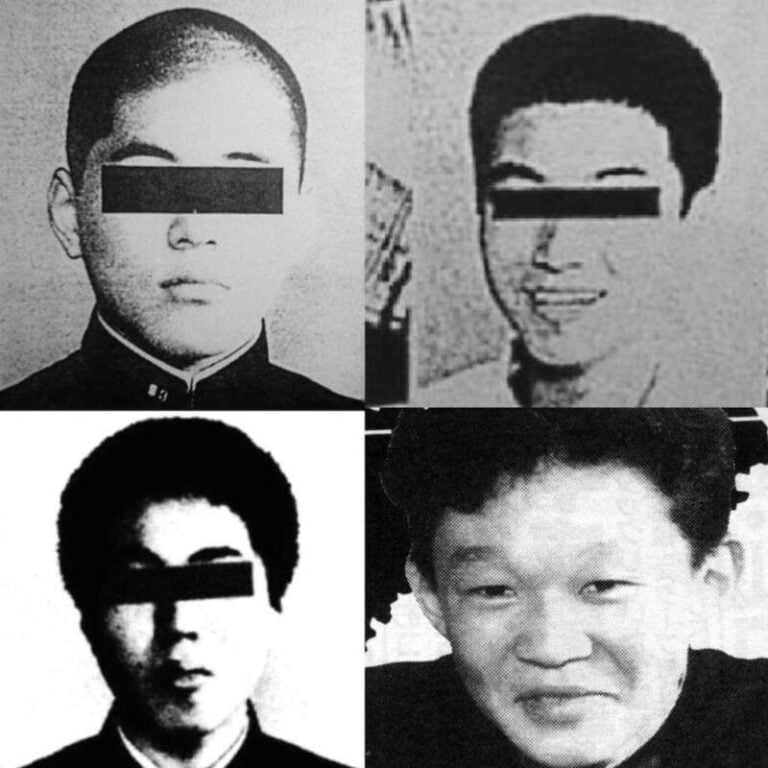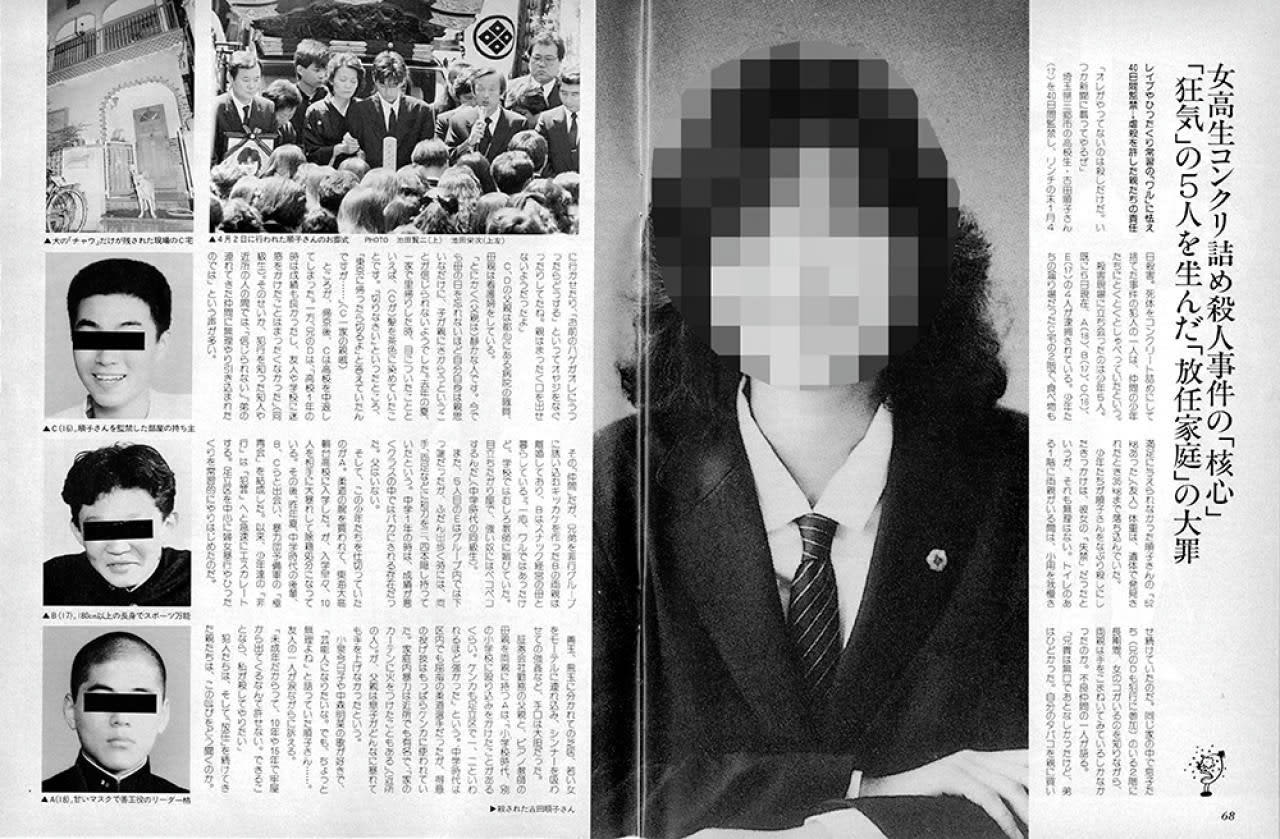Junko Furuta: The Horrifying Case That Shook Japan - Uncovered
Can justice truly prevail when innocence is brutally stolen? The story of Junko Furuta, a Japanese high school student, is a chilling testament to the depths of human depravity and the failings of a system meant to protect its most vulnerable. Her case, a horrific saga of abduction, torture, and murder, continues to haunt the collective consciousness, a stark reminder of the fragility of life and the enduring pain of loss.
In the spring of 1988, Junko Furuta, a seemingly ordinary teenager with dreams and aspirations, vanished from the streets of Misato, Japan. Her disappearance quickly turned into a nightmare, as the details of her fate slowly emerged, revealing a story so brutal and inhumane that it shook the nation to its core. Over a period of 40 days, she was subjected to unimaginable acts of violence, both physical and psychological, perpetrated by a group of teenagers. The perpetrators, fueled by a cocktail of malice and indifference, inflicted upon her a level of suffering that is almost impossible to comprehend.
| Category | Details |
|---|---|
| Full Name | Junko Furuta |
| Date of Birth | January 18, 1971 |
| Place of Birth | Misato, Saitama Prefecture, Japan |
| Education | High School Student |
| Tragic End | Abducted, tortured, and murdered over a period of 40 days in 1988 |
| Location of Death | Kt, Tokyo, Japan |
| Cause of Death | Severe abuse and neglect |
| Perpetrators | Four teenagers, aged 16-18 at the time |
| Legal Outcome | Lenient sentences due to their juvenile status and alleged remorse |
| Legacy | The case sparked international outrage and inspired several movies and manga. |
| Related Cases | "Concrete-Encased High School Girl Murder Case" in Japan, and the "Korean Junko Case" |
Reference: Wikipedia
- Emily Compagno Divorce The Truth Rumors Explored
- Alice Rosenblum Leaked Content More You Need To Know
The ordeal began with her abduction. Junko was lured into a false sense of security, and once captured, she was held captive in a residence in Minato, Tokyo. It was here that her torment began, escalating with each passing day. Her captors, driven by a cruel combination of factors, subjected her to a relentless cycle of brutality. The acts of violence included physical assaults, sexual abuse, starvation, and emotional manipulation, all designed to break her spirit and ultimately, to end her life.
The police investigation, hampered by missteps and delays, was further compounded by the perpetrators' youth and the complexities of the Japanese legal system. The investigation's effectiveness remains a subject of debate, with some questioning whether a more thorough search of the Minato residence could have saved Junko's life. The subsequent discovery of her body, encased in concrete inside a drum in Koto, Tokyo, was a grim confirmation of the unspeakable horrors she had endured.
The details of Junko's final moments are as horrifying as they are heartbreaking. The perpetrators, after weeks of relentless abuse, ultimately ended her life. Following her death, they took steps to conceal their crime, attempting to dispose of the evidence in a callous and calculated manner. Her body was eventually found, a grim testament to the evil she was forced to face.
- Rob Dyrdeks Family Wife Kids Life Beyond Ridiculousness
- Kristi Noem 53 Bikini Photo Breaking The Internet
The subsequent legal proceedings brought little solace to a nation reeling from shock. While the perpetrators were eventually apprehended and brought to trial, the sentences they received were met with widespread disappointment. Because they were juveniles at the time of the crime, they were afforded protections under Japanese juvenile law, which, at the time, was known for its leniency. This outcome only deepened the sense of injustice felt by many, adding insult to the already devastating injury.
The brutal slaying of Junko Furuta sent shockwaves through Japanese society. The case ignited public outrage and sparked a national conversation about the nature of evil, the protection of vulnerable individuals, and the failures of the justice system. The public demanded justice for the young girl, but the legal outcome was a bitter pill to swallow for many.
The lasting impact of Junko Furuta's case extends far beyond Japan. The story of her suffering has become a cautionary tale, a grim reminder of the capacity for cruelty that exists within humanity. The case has inspired numerous films, manga, and documentaries, ensuring that her story continues to be told, and that her memory lives on. The case continues to be referenced in discussions about crime, justice, and the importance of protecting the innocent.
The story is a grim reminder of how quickly life can be shattered and the devastating impact of violence on individuals, families, and communities. It highlights the importance of compassion, vigilance, and the need to create a society where the vulnerable are protected, and justice is truly served.
The film "Concrete", directed by Katsuya Matsumura and starring Yujin Kitagawa, offers a dramatized account of the events. These artistic interpretations, while fictionalized, serve to keep the memory of the tragedy alive and provoke reflection on the issues at hand.
The case, for many, remains a symbol of the failures of a justice system that seemingly prioritized the rights of the perpetrators over the memory of the victim and the needs of her family. It is a stark reminder that justice, in its purest form, is often elusive, and that the search for closure can be a lifelong journey.
The case of Junko Furuta also draws parallels to another case in Korea, often referred to as the "Korean Junko Case." Both cases involve the abduction, torture, and murder of young women by groups of teenagers and young adults. These comparisons highlight the universality of such violence and underscore the need for vigilance in protecting young people from such dangers.
The shocking crime came to light after two of the perpetrators were arrested on charges of another rape, unrelated to the Furuta case. During a police interview, one of the killers, confused by the line of questioning, mistakenly concluded that the officer knew about the Furuta murder. This led to his confession and ultimately, to the unraveling of the truth.
The first trial began on July 31, 1989, in Tokyo. The prosecution and the trial itself became the focus of national and international attention, highlighting the severity of the crime and the need for justice. Classmates of Junko Furuta, filled with grief, wept for their friend at her funeral.
In 2018, one of the convicts in the Junko Furuta case, now going by the name Shinji Minato, was accused of assaulting an employee. This incident served as a stark reminder of the lasting consequences of such crimes, and the enduring trauma they inflict. The incident reignited the discussions on the nature of rehabilitation, the possibility of redemption, and the need for ongoing monitoring of those who have committed heinous acts. He used a metal baton to beat him in the right shoulder.
The legal outcome, however, was disappointing to many. Despite the severity of their crimes, the perpetrators received surprisingly lenient sentences, highlighting the complexities of the Japanese legal system and the protections afforded to juveniles at the time. This disparity added to the sense of injustice.
Junko Furuta was not just a victim; she was a person with dreams, aspirations, and a life that was stolen from her. She was liked by all her classmates. Her tragic story serves as a chilling reminder of the vulnerability of youth, the darkness that can exist in the human heart, and the need for constant vigilance in the face of evil.
Most Japanese citizens are aware of this case by the name of (\u5973\u5b50\u9ad8\u751f\u30b3\u30f3\u30af\u30ea\u30fc\u30c8\u8a70\u3081\u6bba\u4eba\u4e8b\u4ef6). This name, which translates to "Concrete-Encased High School Girl Murder Case," reflects the gruesome method used to dispose of her body and has become synonymous with the tragedy.
The impact of Junko Furutas murder continues to reverberate, serving as a powerful reminder of the importance of protecting the most vulnerable members of society and the enduring quest for justice in the face of unspeakable evil. The case has spawned movies, books, and documentaries, all aiming to keep the memory of this innocent victim alive and to ensure that such a tragedy is never forgotten.
Article Recommendations
- Alice Rosenblum Onlyfans Photos Videos More Latest Updates
- Explore Alice Rosenblum Content Clues Community Discover Now



Detail Author:
- Name : Kailyn Crooks
- Username : ymoore
- Email : hammes.desmond@mitchell.com
- Birthdate : 1998-12-24
- Address : 642 Hoeger Summit Suite 790 East Lenora, GA 76826-6840
- Phone : 1-657-931-5302
- Company : Hahn-Stroman
- Job : Physician
- Bio : Illo ipsa eligendi atque minus. Similique sequi harum eveniet deserunt ipsam numquam. Fugiat exercitationem quasi ex distinctio. Consequatur odio est autem delectus consequatur.
Socials
facebook:
- url : https://facebook.com/aheidenreich
- username : aheidenreich
- bio : Reprehenderit itaque quae dolor recusandae pariatur aut omnis.
- followers : 6681
- following : 2755
twitter:
- url : https://twitter.com/angie_heidenreich
- username : angie_heidenreich
- bio : Eum earum et vero hic explicabo. Mollitia qui velit neque maxime deserunt. Omnis sint nisi quae praesentium ipsa dolorem recusandae.
- followers : 5104
- following : 2325
instagram:
- url : https://instagram.com/angie288
- username : angie288
- bio : Et quidem enim ipsam nam illum animi asperiores. Repudiandae dicta sit esse optio.
- followers : 3434
- following : 779
tiktok:
- url : https://tiktok.com/@angieheidenreich
- username : angieheidenreich
- bio : Pariatur alias quo harum quod est. Quis et accusantium veniam sed.
- followers : 3503
- following : 145
linkedin:
- url : https://linkedin.com/in/aheidenreich
- username : aheidenreich
- bio : Hic labore qui eius earum tenetur.
- followers : 3708
- following : 1911